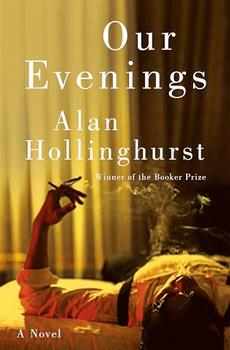Summary | Excerpt | Reviews | Beyond the Book | Readalikes | Genres & Themes | Author Bio

Robert Koch, Arthur Conan Doyle, and the Quest to Cure Tuberculosis
by Thomas GoetzExcerpt
The Remedy
On a brisk spring evening in March 1882, Robert Koch walked into the library at the University of Berlin, and prepared to change the course of medicine for all time.
There were about 100 men gathered in the room, the greatest scientists in Germany. Koch barely acknowledged them as he began his demonstration. He showed his test tubes and cultures. He explained how he had tested and retested his work. There was no grandstanding, no theater. There was only evidence and explanation—and finally, a declaration.
"All of these facts taken together can lead to only one conclusion," Koch said. "That in the bacilli we have … the actual infective cause of tuberculosis."
Bacteria caused tuberculosis. The statement was so matter-of-fact in its delivery that Koch's claim seemed almost insignificant. There was no applause, no murmuring, no debate; the crowd was simply, utterly, absolutely speechless. Paul Ehrlich, a young scientist in the audience who would go on to win the Nobel Prize, was awestruck by the majesty of Koch's presentation. "I hold that evening to be the most important experience of my scientific life," he said later.
To grasp the gravity of Koch's discovery, we must first get our heads around this: To live in the 19th century was to experience infectious disease as a constant, to have death loom around any corner, and to always live in fear that a cold, a rash, or a cough might soon be the end of one's days on earth. Simply put, more people died of more things back then; the death rate in London in 1850 was 25 per 1,000—nearly five times today's death rate. That means that every year, some 2 percent of the population would die, a rate staggering in its commonness.
Such an existence is almost inconceivable today. In the 21st century, in the developed world at least, infectious disease is more of a threat than a reality. In fact, we have been inoculated from the experience of contagion. We can no longer imagine a disease flourishing in our midst without any explanation, treatment, or cure. Today, few of us have much experience with infectious disease, beyond the occasional cold or flu or stomach bug.
The 19th century, though, was a 100-year dirge from one horrid epidemic to another. Cholera, plague, smallpox, yellow fever, influenza, measles—all of these pulsed through growing urban populations of the 1800s, killing thousands and then stealthily retreating for a generation or two, waiting for immunity to fade, before returning to kill thousands once more. All of these diseases came quickly, both in terms of their attack on the human body, and the speed with which they spread through a community. They were fast and terrifying, and then, after some weeks or months or at most a couple of years, they were gone.
Tuberculosis was altogether different. It was not an epidemic but an endemic disease; it didn't come in waves or explode through a population, its presence was constant, pervasive, and persistent. Though it had afflicted humanity for millennia, in the 19th century tuberculosis went on a rampage, a tide of death known at the time as The White Plague. As Koch noted in his opening remarks, the disease was the largest killer by far in the United States and Europe. At the Hopital de la Charite in Paris, more than one-third of autopsies performed in the early 1800s found the cause of death to be TB. By the end of the century, in 1890, the registrar general's returns showed that nearly one half of those who died between 15 and 35 years of age died of consumption. This toll was particularly painful for the nascent life insurance industry. At the British Empire Mutual Life office, a calculation found that tuberculosis was responsible for more than three-quarters of company benefit payments.
All told, the pervasiveness of tuberculosis and the impotence of medicine to treat it created a specter of misery in 19th century Europe and America. To live in this environment would have been to be always reminded of the presence of death. The constant cough of consumptives, combined with the crackling sound of their lungs straining to breath, known as rales, created a white noise of illness in European and American cities. The only consolation would have been ignorance. Until Koch's discovery of the bacillus, being coughed on, as many inevitably were, would not have prompted much concern.
Reprinted from The Remedy: Robert Koch, Arthur Conan Doyle, and the Quest to Cure Tuberculosis by arrangement with Gotham Books, a member of Penguin Group (USA) LLC, A Penguin Random House Company. Copyright Thomas Goetz, 2014.




Flaming enthusiasm, backed up by horse sense and persistence, is the quality that most frequently makes for ...
Click Here to find out who said this, as well as discovering other famous literary quotes!
Your guide toexceptional books
BookBrowse seeks out and recommends the best in contemporary fiction and nonfiction—books that not only engage and entertain but also deepen our understanding of ourselves and the world around us.